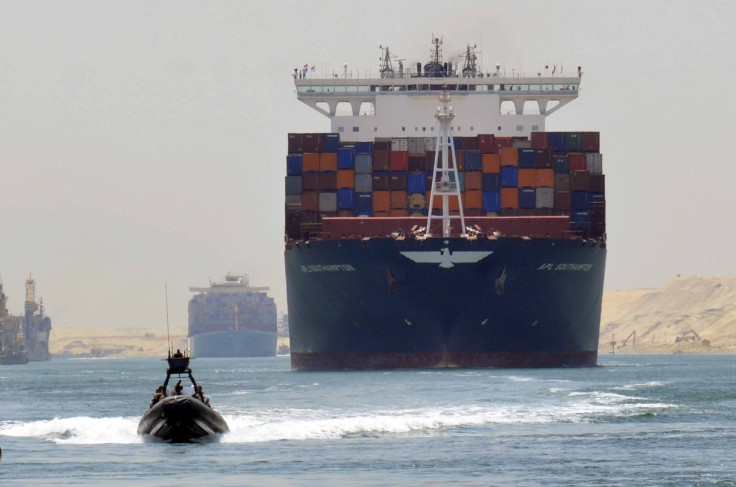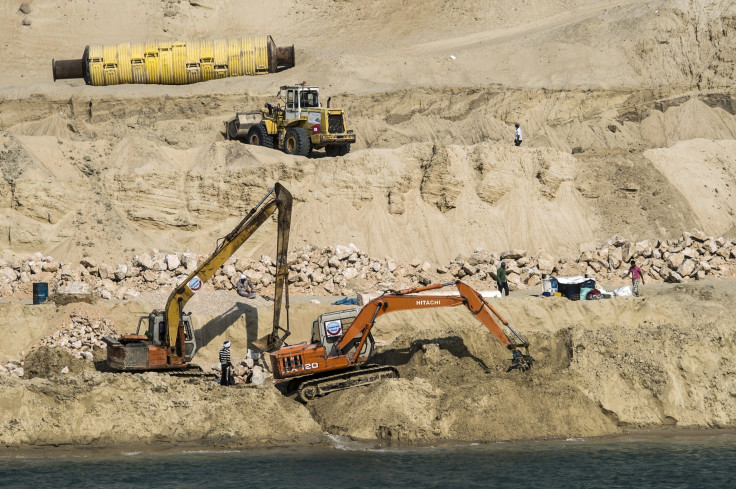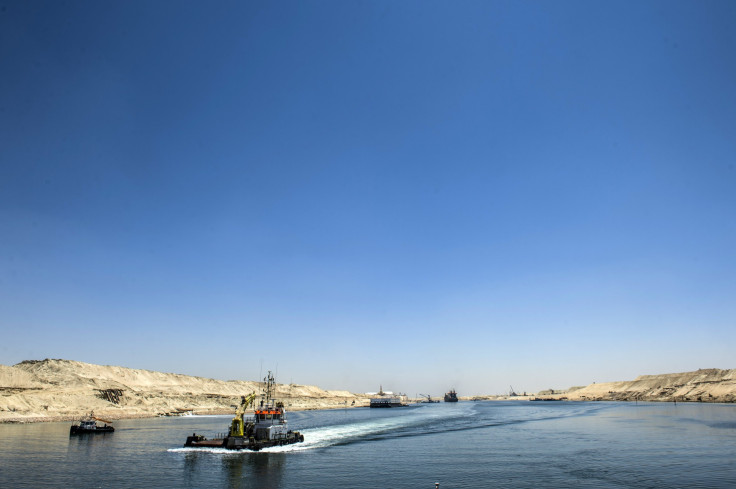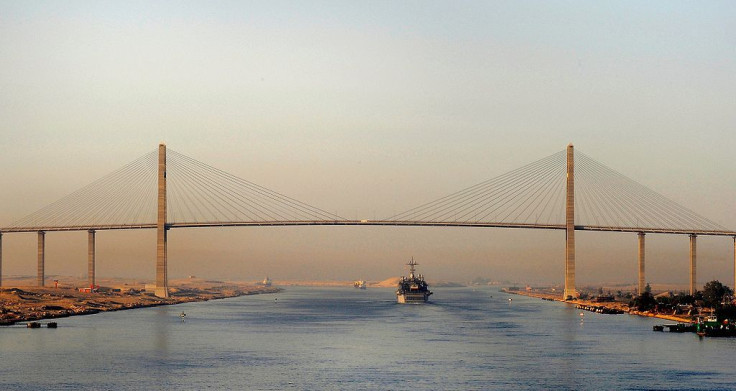Suez Canal Expansion In Pictures: Egypt Unveils New $8 Billion Waterway, Amid Controversy [PHOTOS]

Egyptian president Abdel Fattah el-Sisi unveiled an $8 billion expansion of the Suez Canal Thursday, a project that has drawn criticism and controversy, even as Egyptian officials call it "The Great Egyptian Dream." Here's what that dream looks like, in photos.
The yearlong project constructed an extra 21-mile waterway paralleling one section of the historic, 120-mile canal, which links the Red Sea to the Mediterranean. It also deepened a section of the original. The new section is in the port city of Ismailia, which is east of the capital Cairo.

Now, ships traveling in opposite directions will be able to pass through the canal simultaneously, rather than having to wait, wasting fuel and time. Egyptian officials have said that the expansion will double the canal's traffic and more than double its revenue, to $13.2 billion, by 2023, Sky News reported. Sisi has promised that the new and improved canal will be the solution to Egypt's economic woes.

The rest of the world isn't so sure. Expectations of more canal traffic and higher revenues are unrealistic, according to experts, the Wall Street Journal reported. “It’s not really clear how the government has arrived at their projections,” Neil Davidson, a senior analyst at Drewry said. Others say the government is trying to draw attention away from other pressing concerns, such as potential terrorism in Egypt's increasingly volatile Sinai Peninsula or the government crackdown on opposition.
This the #NewSuezCanal inauguration 2015: (v @MartjanKuit) pic.twitter.com/tCJdaiD1Ct
— Harald Doornbos (@HaraldDoornbos) August 6, 2015French engineers built the Suez Canal in 1869, linking the Red Sea with the Mediterranean and facilitating the flow of goods and valuable commodities, particularly oil. It remained under French and English control until Egyptian President and staunch nationalist Gamal Abdel Nasser announced in July 1956 that he would nationalize the canal.

In protest, Egypt and England, the countries controlling the bridge, and Israel invaded to retake control of the Canal, although they eventually ceded to international pressure and withdrew, allowing it to reopen in March 1957.
No matter who controls it, the waterway has long been a crucial and strategic one for global trade. Below is the Egyptian-Japanese Friendship Bridge over the Suez Canal in El Qantara, Egypt, in 2009:

© Copyright IBTimes 2024. All rights reserved.





















